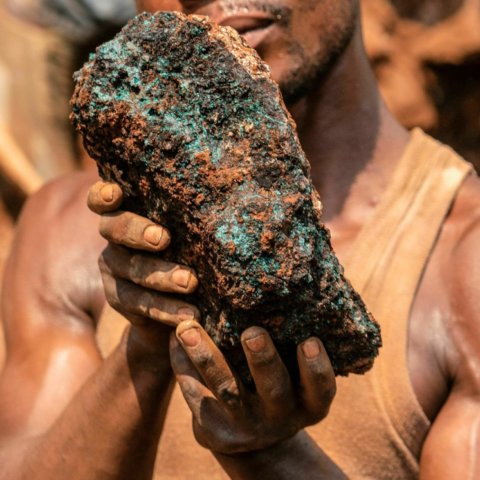By Irina Plaks

The polar ice caps are melting, polar bears are dying, the earth’s average temperature is increasing, and humans are to blame for it all. Increased levels of greenhouse gases in the atmosphere are wreaking havoc on the planet, from more extreme weather patterns to the flooding of coastal regions. Air pollution is a problem in many urban areas, and species are going extinct at startling rates. Whether these claims sound the alarm bells or fall on deaf ears, one fact cannot be denied: the United States military considers climate change a threat to national security.
Secretary of Defense Chuck Hagel stated in the 2014 Climate Change Adaptation Roadmap that “a changing climate will have real impacts on our military and the way it executes its missions.” This Department of Defense document outlines the threats posed by climate change and recommendations for actions the DOD should take to address these threats. Climate change is considered a threat multiplier, meaning it will increase the magnitude of already present threats, including resource scarcity, instability, and terrorism. It has the potential to turn bad situations in impoverished countries even worse.
One of the harmful effects of climate change is an increase in extreme weather events and patterns, including droughts and flooding. This can lead to food and water shortages that can spark conflict in unstable nations. The civil war in Syria, in fact, may have some of its roots in a severe drought that began in 2006. Many farmers were forced to leave their lands and move to urban areas. These cities became a breeding ground for anger and discontentment among the high levels of unemployment and overcrowding, the perfect recipe for a revolution. The U.S. military has now been pulled into the conflict and is preparing for similar situations in the future.
The Middle East was just hit with another intense drought and heat wave, particularly in Iraq. Though it is too early to tell correlation from coincidence, the timing lines up with the emergence of ISIL. Studies have shown that there is a connection between high temperatures and political instability. Though climate change did not directly lead to the formation of a terrorist group, it was most likely a threat multiplier. Droughts and high temperatures lead to resource scarcity, which can lead to human migration. This in turn can cause overpopulation, civil unrest, government instability, and so on. The result is a militant group taking over large portions of land and terrorizing innocent people across the Middle East. Conservative estimates place the price tag for fighting ISIL at around $10 billion per year.
Another consequence of climate change that has immense implications for the U.S. military is the melting Arctic ice caps. In 2013, the Department of Defense published the Artic Strategy, outlining the steps the military needs to take to address a more accessible Arctic region. The Arctic region is estimated to hold 17 percent of the global supply of oil and 30 percent of the global supply of natural gas, making this a lucrative area for any nation. Currently, the U.S. is not in a position to claim any of these Arctic resources, but maintaining economic freedom and superiority is a priority for the military. The U.S. Coast Guard only has two icebreaker ships, neither of which is expected to last beyond 2020. Russia, on the other hand, has 37 icebreakers, more than double all the other Arctic countries combined, and has the world’s only nuclear powered icebreaker fleet. Putin is not wasting any time claiming more Arctic territory and with it, Arctic resources, for Russia.
The melting Arctic region has other economic and security implications. The North-East Passage between Asia and the U.S. will possibly be an alternative trade route to the Suez Canal. A strong icebreaker fleet is needed, however, to keep the seaway open year round. The country in control of the passage also controls the flow of trade. Russia, with its superior icebreaker fleet, is poised to take up the mantle, but it is in the U.S.’s national interests to control this trade route.
The DOD is also worried about the potential homeland security threats that an open Arctic could pose. Terrorists could have a new angle of attack on the U.S. through the Arctic Ocean that was not available to them in the past and that the military is not yet ready to counter. Though the likelihood of such an attack is minimal, as the U.S. Coast Guard motto says, “Semper Paratus – Always [be] Ready.”
Rising sea levels due to climate change will have a strong effect on current and future military bases and installations. Hampton Roads, VA, for example, is home to the largest concentration of military facilities in the world. It is also now home to recurring flooding that impacts those facilities. Over the next 20 to 50 years, the DOD predicts that sea levels will rise by 1.5 feet, and it is currently assessing its over 7,000 military installations around the world for the potential risks of the imminent rise in sea levels. The Pentagon will then need to make strategic choices on which bases to build and which to close based on these environmental factors.
As some continue to deny the existence of climate change, the U.S. military is choosing to side with science and is taking steps to prepare for the future. Not many would picture the Joint Chiefs of Staff in the same boat as Greenpeace environmental activists. But with the proper strategic planning, that boat will weather whatever storms may come to keep the nation secure.


